#ad operation
Text
https://x.com/MorePerfectUS/status/1765391777580912958?s=20


PLEASE GD IF YOU LOVE AND WANT TRAINS
#so excited that the Amtrak is adding#new routes looking to reach 160 new communities by 2035#new trains to the NE too#doing this by making coaches have fixed seating meaning there’s alternate forward and backward facing ones#so they can operate as push pull trains with less turnaround time#thehre debuting#2nd gen acela and airo trainsets#so excited anyways take a look 👀
24K notes
·
View notes
Text
Why Outsourcing Ad Operations Makes Sense: 8 Benefits of Partnering with a Vendor

In today's fast-paced digital landscape, businesses are constantly seeking ways to optimize their advertising efforts. One increasingly popular strategy is outsourcing ad operations. But why does this make sense? Let's explore eight compelling benefits of partnering with a vendor for your ad operations.
1. Cost Efficiency
One of the primary reasons companies choose to outsource ad operations is cost efficiency. Maintaining an in-house team requires significant investment in salaries, benefits, training, and technology. By outsourcing, businesses can convert these fixed costs into variable costs, paying only for the services they need. This flexibility allows companies to allocate resources more efficiently and invest in other critical areas of their business.
2. Access to Expertise and Technology
Ad operations require specialized knowledge and cutting-edge technology. Vendors dedicated to ad operations possess a deep understanding of industry trends, best practices, and the latest tools and platforms. By partnering with a vendor, businesses gain access to a team of experts who are well-versed in optimizing campaigns, analyzing performance metrics, and leveraging advanced technologies. This expertise can significantly enhance the effectiveness of your advertising efforts.
3. Scalability and Flexibility
Outsourcing ad operations offers unparalleled scalability and flexibility. Whether you're launching a new product, entering a new market, or experiencing seasonal fluctuations in demand, an outsourced partner can quickly adjust to your needs. They can scale up or down based on your requirements, ensuring that your ad operations are always aligned with your business goals. This agility is particularly valuable in a dynamic market where rapid adjustments can make a substantial difference.
4. Focus on Core Competencies
Managing ad operations in-house can be time-consuming and distract from your core business activities. By outsourcing, you can free up your internal team to focus on what they do best—whether that's product development, customer service, or strategic planning. This shift allows your company to concentrate on its primary objectives, driving growth and innovation without getting bogged down by the complexities of ad operations.
5. Improved Campaign Performance
A vendor specializing in ad operations brings a wealth of experience and insights to the table. They can analyze data more effectively, identify trends, and implement strategies that optimize your campaign performance. This results-driven approach ensures that your advertising budget is utilized efficiently, maximizing return on investment (ROI). Vendors also stay abreast of industry changes and can quickly adapt to new algorithms, policies, and market conditions, keeping your campaigns relevant and effective.
6. Enhanced Reporting and Analytics
Effective ad operations rely heavily on data and analytics. Vendors provide sophisticated reporting tools and dashboards that offer real-time insights into your campaign performance. This transparency allows you to track key metrics, measure success, and make informed decisions. Detailed analytics help you understand audience behavior, identify opportunities for improvement, and refine your advertising strategy. With access to these insights, you can continuously optimize your campaigns for better results.
7. Risk Mitigation
Navigating the complexities of ad operations can be risky, especially with the constantly evolving digital landscape. Regulatory changes, platform updates, and potential security breaches can pose significant challenges. Outsourcing to a reputable vendor can mitigate these risks. Vendors have the expertise to ensure compliance with industry regulations, implement robust security measures, and stay updated with platform changes. This proactive approach minimizes the risk of costly mistakes and ensures your campaigns run smoothly.
8. Access to a Broader Network
Ad operations vendors often have established relationships with key players in the industry, including ad networks, publishers, and technology providers. By partnering with a vendor, you gain access to this broader network, which can open up new opportunities for your business. Whether it's negotiating better rates, securing premium ad placements, or exploring innovative advertising formats, a vendor's connections can provide a significant competitive advantage.
Conclusion
Outsourcing ad operations offers a multitude of benefits that can help businesses optimize their advertising efforts, reduce costs, and achieve better results. From accessing specialized expertise and technology to improving campaign performance and mitigating risks, partnering with a vendor makes sense for companies looking to stay competitive in the digital age. By focusing on their core competencies and leveraging the strengths of an experienced ad operations vendor, businesses can drive growth, innovation, and success in today's dynamic market.
As the digital advertising landscape continues to evolve, the decision to outsource ad operations will likely become even more advantageous. Companies that embrace this strategy will be well-positioned to navigate the complexities of modern advertising, capitalize on emerging trends, and achieve their marketing objectives with greater efficiency and effectiveness.
Stay ahead in the dynamic landscape of digital marketing at https://www.hopbug.com
#indonesia#digitalmarketing#jakarta#digitalagency#hopbugmedia#hopbug#digitalmarketingagency#performancemarketing#digitaladvertising#advertising#ad operation
0 notes
Text
Digital Ad Operations | Accel Digital
Accel Digital provides Ad operations, Ad Support and Ad Tech services to help our clients survive and thrive in this challenging environment. Contact us today!
For more info visit here https://www.accel-digital.com/
1 note
·
View note
Note
Tbh at this point you should just make your own webcomic app/website because it would probably be 100 times better than whatever going on with webtoon right now.
hahaha it wouldn't tho, sorry 💀
Here's the fundamental issue with webcomic platforms that a lot of people just don't realize (and why they're so difficult to run successfully):
Storage costs are incredibly expensive, it's why so many sites have limitations on file sizes / page sizes / etc. because all of those images and site info have to be stored somewhere, which costs $$$.
Maintenance costs are expensive and get more so as you grow, you need people who are capable of fixing bugs ASAP and managing the servers and site itself
Financially speaking, webcomics are in a state of high supply, low demand. Loads of artists are willing to create their passion projects, but getting people to read them and pay for them is a whole other issue. Demand is high in the general sense that once people get attached to a webtoon they'll demand more, but many people aren't actually willing to go looking for new stuff to read and depend more on what sites feed them (and what they already like). There are a lot of comics to go around and thus a lot of competition with a limited audience of people willing to actually pay for them.
Trying to build a new platform from the ground up is incredibly difficult and a majority of sites fail within their first year. Not only do you have to convince artists to take a chance on your platform, you have to convince readers to come. Readers won't come if there isn't work on the platform to read, but artists won't come if they don't think the site will be worth it due to low traffic numbers. This is why the artists with large followings who are willing to take chances on the smaller sites are crucial, but that's only if you can convince them to use the site in favor of (or alongside) whatever platform they're using already where the majority of their audience lies. For many creators it's just not worth the time, energy, or risk.
Even if you find short-term success, in the long-term there are always going to be profit margins to maintain. The more users you pull in, the more storage is used by incoming artists, the more you have to spend on storage and server maintenance costs, and that means either taking the risk at crowdfunding (ex. ComicFury) or having to resort to outsider investments (ex. Tapas). Look at SmackJeeves, it used to be a titan in the independent webcomic hosting community, until it folded over to a buyout by NHN and then was pretty much immediately shuttered due to NHN basically turning it into a manwha scanlation site and driving away its entire userbase. And if you don't get bought out and try your hand at crowdfunding, you may just wind up living on a lifeline that could cut out at any moment, like what happened to Inkblazers (fun fact, the death of Inkblazers was what kicked off the cultural shift in Tapas around 2015-16 when all of IB's users migrated over and brought their work with them which was more aimed towards the BL and romancee drama community, rather than the comedy / gag-a-day culture that Tapas had made itself known for... now you deadass can't tell Tapas apart from a lot of scanlation sites because it got bought out by Kakao and kept putting all of its eggs into the isekai/romance drama basket.)
Right now the mindset in which artists and readers are operating is that they're trying way, way too hard to find a "one size fits all" site. Readers want a place where they can find all their favorite webtoons without much effort, artists wants a place where they can post to an audience of thousands, and both sides want a community that will feel tight-knit. But the reality is that you can't really have all three of those things, not on one site. Something always winds up having to be sacrificed - if a site grows big enough, it'll have to start seeking more funding while also cutting costs which will result in features becoming paywall'd, intrusive ads, creators losing their freedom, and/or outsider support which often results in the platform losing its core identity and alienating its tight-knit community.
If I had to describe what I'm talking about in a "pick one" graphic, it would look something like this:
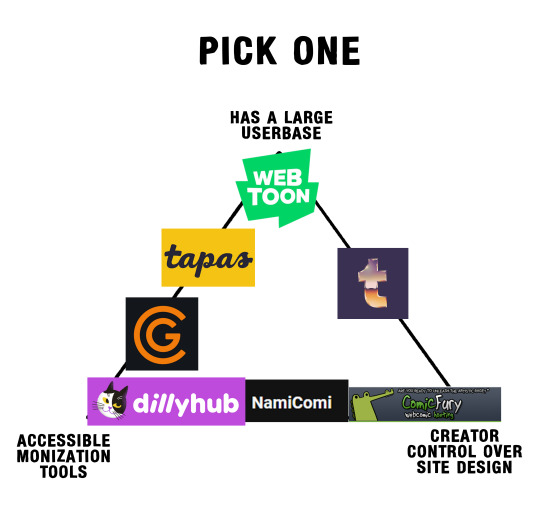
(*note: this is mostly based on my own observations from using all of these sites at some point or another, they're not necessarily entirely accurate to the statistical performance of each site, I can only glean so much from experience and traffic trackers LMAO that said I did ask some comic pals for input and they were very helpful in helping me adjust it with their own takes <3).
The homogenization of the Internet has really whipped people into submission for the "big sites" that offer "everything", but that's never been the Internet, it relies on being multi-faceted and offering different spaces for different purposes. And we're seeing that ideology falter through the enshittification of sites like Twitter, Facebook, Instagram, etc. where users are at odds with the platforms because the platforms are gutting features in an attempt to satisfy shareholders whom without the platforms would not exist. Like, most of us aren't paying money to use social media sites / comic platform sites, so where else are they gonna make the necessary funds to keep these sites running? Selling ad space and locking features behind paywalls.
And this is especially true for a lot of budding sites that don't have the audience to support them via crowdfunding but also don't have the leverage to ask for investments - so unless they get really REALLY lucky in EITHER of those departments, they're gonna be operating at a loss, and even once they do achieve either of those things there are gonna be issues in the site's longevity, whether it be dying from lack of growing crowdfunding support or dying from shareholder meddling.
So what can we do?
We can learn how to take our independence back. We don't have to stop using these big platforms altogether as they do have things to offer in their own way, particularly their large audience sizes and dipping into other demographics that might not be reachable from certain sites - but we gotta learn that no single site is going to satisfy every wish we have and we have to be willing to learn the skills necessary to running our own spaces again. Pick up HTML/CSS, get to know other people who know HTML/CSS if you can't grasp it (it's me, I can't grasp it LOL), be willing to take a chance on those "smaller sites" and don't write them off entirely as spaces that can be beneficial to you just because they don't have large numbers or because they don't offer rewards programs. And if you have a really polished piece of work in your hands, look into agencies and publishing houses that specialize in indie comics / graphic novels, don't settle for the first Originals contract that gets sent your way.
For the last decade corporations have been convincing us that our worth is tied to the eyes we can bring to them. Instead of serving ourselves, we've begun serving the big guys, insisting that it has to be worth something eventually and that it'll "payoff" simply by the virtue of gambler's fallacy. Ask yourself what site is right for you and your work rather than asking yourself if your work is good enough for them. Most of us are broke trying to make it work on these sites anyways, may as well be broke and fulfilled by posting in places that actually suit us and our work if we can. Don't define your success by what sites like Webtoons are enforcing - that definition only benefits them, not you.
#my favorite out of these is comicfury because it gives you the most control out of all of them#and you can offer monetization tools like ads and patreon links#it also offers super easy tools to help build your own site if you're new to that#it's as close to “running your own site” as comic hosting can get#but you can also learn how to run your own site if you want undeniably full control without fear of the platform host shuttering#also look into collectives like SpiderForest!#they basically operate as a co-op where people host their work with them and get ad opportunities#but you have to apply to get in#ama#ask me anything#anon ama#anon ask me anything#webcomic tips
6K notes
·
View notes
Text
Even More Comprehensive BG3 Timeline
(Now with citations!)
Years in (paren) are confirmed, all other lines are approximations.
For my own sanity this timeline is based on available in-game information and not the Forgotten Realms at large.
1450s
Enver Flymm born
Gale Dekarios born (1457)
Enver Flymm sold to Raphael by his parents, renamed Gortash
Gortash learns about Crown of Karsus while a prisoner of Raphael
Karlach Cliffgate born
1460s
Gortash escapes the House of Hope
Gale Dekarios summons Tara the Tressym (1467)
Wyll Ravengard born (1468)
1470s
Lae’zel of K’liir born (1470)
Gortash in his Heapside Reavers period
Gortash rebrands as a black market arms dealer
Orin the Red born to Helena and Sarevok Anchev
Durge begins their serial killing spree in Baldur’s Gate (1477)
The Emperor dominates Duke Belynne Stelmane (1479)
1480s
Elminster resurrects Mystra (1480)
Gortash trades Karlach to Zariel for infernal machines & iron (1482)
Baldur’s Gate’s Beloved Ranger statue goes missing (1482)
Duke Abdel Adrian murdered during Returning Day speech (1482)
- Bhaal resurrected
- Ulder Ravengard replaces Adrian as Marshall and as Duke
Orin kills her mother Helena in self-defense
Gortash recruits Franc Peartree to distribute infernal iron weapons
Gortash establishes a cult of Bane in Baldur’s Gate
Gortash approaches Durge about an alliance
Gortash moves against the Zhentarim & Knights of the Shield
Ulder Ravengard named Grand Duke
Wyll Ravengard pact with Mizora, leaves Baldur’s Gate (1485)
Dead Three made aware of the Crown of Karsus (most likely informed by Gortash)*
- Gortash becomes Bane’s Chosen
- Durge becomes Bhaal’s chosen
- Gortash & Durge are instructed to recruit Ketheric
Gortash tells Durge about Crown of Karsus (via correspondence)
Hall/House of Wonders test mission*
- Durge gets Bhaalist memorabilia
- Gortash gets a bunch of Gondian designs
- Durge & Gortash get companionship
1490s
The Chosen visit Ketheric at Moonrise, learn about Illithid colony
Gortash & Durge visit the House of Hope (for intel on Mephistar?)
Gortash & Durge raid Mephistar
- They get the Crown of Karsus
- They get the book on the accelerated grand design
Gortash captures the Emperor
Gortash & Durge return to Moonrise
- Their identities are kept secret from Ketheric’s people
- Durge impresses the Moonrise Gnolls, but not Steelclaw
- Ketheric yells at Durge in the throne room for an unknown reason
Durge proposes their plan to the Elder Brain who accepts
Raid on the illithid colony (1491)
- Durge puts the Crown on the Elder Brain
- Orin gets Durge alone during the raid & stabs them in the head
- Orin tadpoles Durge, making them the first True Soul
- Orin declares herself the Chosen of Bhaal
1492
Durge is found by Kressa Bonedaughter
Minsc captured by Absolutists at a recruitment rally in the Undercity
Gortash gets weird and intense with unethical experiments
- Some futzing to get the tadpoles to consistently remain in stasis
- This is when the name ‘True Souls’ gets coined
- Extremely questionable fun with brains
- Getting the Absolute’s voice sorted out
- Tadpoling his parents
- Poorly conceived experiments on children & their parents
Gortash has Iron Throne converted to hold hostages
Gortash presents prototype Steel Watcher to the city council
Jaheira tracks cult to shadow-cursed land, meets Isobel
Minthara Baenre is 'recruited' by Orin and Ketheric
The Descent, Elturel fall into Avernus happens
Duke Vanthampur revealed as a diabolist, killed by adventurers
Guild Bursar Uktar launders money for Gortash’s Campaign funds
Isobel is resurrected by the Dead Three
The Elder Brain sends the Chosen dreams about the Astral Prism
Gortash researches the Prism, finds out that Vlaakith has it
Gortash tasks Ketheric with sending a team to get the Astral Prism
- They send a nautiloid piloted by the Emperor and other illithid
- The Elder Brain lets the Emperor slip its leash
- Magthew Budj arranges for Durge to be on the nautiloid as well
Gortash deploys Steel Watch in Lower/Outer City
At this point Elturel is no longer in Avernus
First Druid Halsin captured by goblins
Nautiloid picks up Shadowheart & the Prism from Astral Plane
Nautiloid picks up Lae’zel
Nautiloid goes to Baldur’s Gate, picks up Gale & Astarion
Nautiloid goes to Avernus, picks up Karlach & Wyll
Nautiloid crashes, (20 Eleasis, 1492)
Some helpful links:
A page from Sarevok’s book: Sarevok - (Murder tribunal)
Accelerated Grand Design: Gortash - (Gortash's Office)
An Offer: Gortash - (Peartree basement)
Aquatic Labor: Gortash - (Flymm’s Cargo Basement)
Baldur’s Gate Temple of Bhaal: Yanthus - (Gortash’s Office)
Balthazar’s Notes: Balthazar - (Necrotic laboratory)
Clasped Book: Balthazar - (Balthazar’s chambers)
Devil’s Fee Observer’s Report**: Himberloo - (Nine-Fingers’ office)
Elder Brain Domination: Ketheric/Yanthus - (Ketheric’s Room)
Enhanced Weapons - Sales Ledger: Peartree - (Peartree basement)
Experiment on Cruor: Orin - (Temple of Bhaal)
How To Build a Watcher: deceased Gondian - (Steel Watch foundry)
Journal of Enver Gortash: Gortash - (Gortash’s Office)
Magical Histories: Volume 2: The Spellplague: unknown - (Sorcerous Sundries)
Memoir Notes with Recent Addenda: Gortash - (Gortash’s office)
Missive from Gortash: Gortash - (Ketheric’s room)
Missive from Ketheric: Ketheric - (Moonrise, 2nd floor)
Mistress of Souls’ Research Log: Kressa - (Mind flayer barracks)
My Gratitude: Gortash - To Peartree (Peartree basement)
Next Steps: Gortash - (Gortash’s office)
Prayer for Forgiveness: Durge - (Necrotic laboratory)
Scrapbook of Letters: Gortash/Durge - (Flymm’s Cobblers)
Special Operations - Infernal Arms: Uktar -
Studies of the Elder Brains: Gortash/Yanthus - (Gortash’s Office)
Suspended Ceremorphosis: Gortash/Yanthus - (Tadpoling center)
Test Mission with Gortash: Durge - (Temple of Bhaal)
The Astral Prism Heist: Gortash - (Gortash’s office)
The Dukes of Baldur’s Gate: unknown - (Baldur’s Mouth/Peartree’s house)
The Grand Design: Gortash/Yanthus - (Mind flayer colony)
The True Life of ‘Lord’ Gortash: a skeleton - (Wyrm’s Rock Prison)
The Ultimate State: Gortash - (Gortash’s office/Flymm’s Cobblers)
*an in-game contradiction between Gortash and Durge. See: ‘Test Mission with Gortash’ and ‘Memoir Notes with Recent Addenda’. I’ve placed it after, but there’s also a legitimate argument to be made that Gortash and Durge met and became allies much earlier, possibly around the same time as Gortash’s betrayal of Karlach
Additionally, the House of Wonders (church/workshop) and the Hall of Wonders (museum) are two different buildings in the Upper City. Durge writes that the Hall is their target, while Gortash writes that the House is their target. It is my opinion that they hit both locations.
**no link cuz the bg3.wiki doesn’t have it??
#bg3#bg3 spoilers#bg3 timeline#The Dead Three#Lord Enver Gortash#Orin the Red#The Dark Urge#The Emperor#Shadowheart#Lae'zel of K'liir#Gale of Waterdeep#Gale Dekarios#Astarion Ancunin#Karlach Cliffgate#Wyll Ravengard#The Blade of Frontiers#High Harper Jaheira#Minsc of Rashemen#There's also a note from a Sharran who witnessed durgetash coming out of the devil's fee but I couldn't find that either#Anything that I learned from in-game dialogue isn't in the wiki at all so you'll have to find it yourself#I suspect that Special Operations - Infernal Arms is probably on Uktar's person but I haven't confirmed#5/26 edits to a few items / added note about the Hall and/or House of Wonders Heist
714 notes
·
View notes
Text
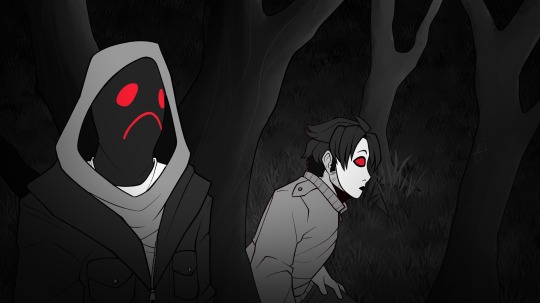
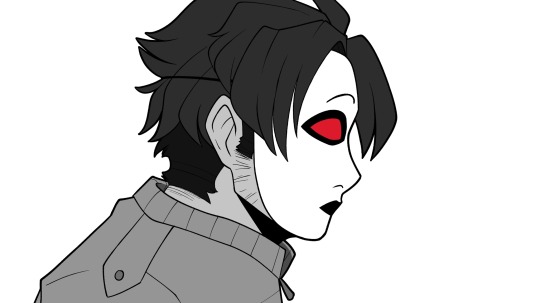
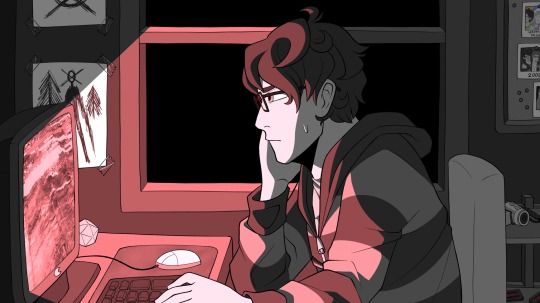

I’m working on a MAP part for THIS awesome Marble Hornets-themed project, and I wanted to share a few of my favorite frames from my WIP! The final stretch of my part is going to include 7 halfbodies and 7 fully-rendered backgrounds though, so uh… it’s not gonna be done for a while. I did this to myself (but man, I think it’s gonna turn out cool at least!)
#my post#my art#digital art#marble hornets#art#fanart#hoody marble hornets#brian marble hornets#brian thomas#masky marble hornets#tim marble hornets#tim wright#alex marble hornets#alex kralie#the operator marble hornets#slenderman#multi animator project#WIP#curly haired Alex is my new favorite headcanon btw#it wasn’t intentional at all but I just kept adding more and more curls and it was SO FUN#Seth and Amy are also there if you squint
441 notes
·
View notes
Text
Ngl, this one new piece of dialogue from Harvey--

--has me realizing just how ripe with angst potential his character is. Granted, it was always sort of implied that there was once a patient he couldn't save, and that he has never really forgiven himself for that, but this new line states it more clearly, and also adds some juicy context we didn't have before: that patient was someone he personally cared for.
Now add in the fact that he is still the guy who has to patch up the Farmer after a deadly encounter in the Mines/Skull Caverns--even if they're dating/married. The game actually allows for Harvey to relive the trauma of being solely responsible for saving the life of someone he loves--and the terror that he might fail again.
With all that in mind, suddenly I can't really be that mad at him when he charges me 1,000g for medical expenses.
#stardew valley#sdv harvey#niki rambles#CA missed the opportunity to utterly destroy every Harvey-lover in the world#by adding unique dialogue for when he has to operate on his idiot spouse who got totally wrecked in the Skull Caverns
376 notes
·
View notes
Text
Cold Iron in folklore, fiction, and RPGs
'Gold is for the mistress—silver for the maid!
Copper for the craftsman cunning at his trade.'
'Good!' said the Baron, sitting in his hall,
'But Iron—Cold Iron—is master of them all!'
— Rudyard Kipling, “Cold Iron”
Folklore

Drudenmesser, or "witch-knife", an apotropaic folding knife from Germany
The notion that iron (or steel) can ward against evil spirits, witches, fairies, etc is very widespread in folklore. You hang a horseshoe over your threshold to deny entry to evil spirits, you carry an iron tool with you to make sure devils won't assault you, you place a small knife under the baby's crib to ward it from witches, and so on. Iron is apotropaic in many many cultures.
In English, we often come across passages that refer to apotropaic cold iron (or cold steel). "All uncouth, unknown Wights are terrifyed by nothing earthly so much as by cold Iron", says Robert Kirk in 1691, which I believe is the earliest example. "Evil spirits cannot bear the touch of cold steel. Iron, or preferably steel, in any form is a protection", says John Gregorson Campbell in 1901.
Words
So what is cold iron? In this context, it’s just iron. The “cold” part is poetic, especially – but not only – if we’re talking about either blades (or swords, weapons, the force of arms) or manacles and the like. It just sounds more ominous. There are “cold yron chaines” in The Fairie Queene (1596), and a 1638 book of travels tells us that a Georgian general (in the Caucasus) vowed “to make the Turk to eat cold iron”.
Green’s Dictionary of Slang defines “cold iron” as a sword, and dates the term to 1698. From 1725 it appears in Cant dictionaries (could this sense be thieves’ cant, originally? why not, plenty of words and expressions started as underworld slang and then entered the mainstream), and from ~1750 its use becomes much more common.

NGram Viewer diagram for 1600-2019.
In other contexts, cold iron is (surprise!) iron that’s not hot. So let’s talk a bit about metallurgy.
Metals

In nature, we can find only one kind of iron that’s pure enough to work with: meteoritic iron. It has to literally fall from the sky. Barring that very rare occurrence, people have to mine the earth for iron ore, which is not workable as is. To separate the iron from the ore we have to smelt it, and for that we need heat, in the form of hot charcoals. Throwing the ore on the coals won’t do much of anything, it’s not hot enough. But if we enclose the coals in a little tower built of clay, leaving holes for air flow, the temperature rises enough to smelt the ore. That’s called a bloomery.

clay bloomery / medieval bloomery / beating the bloom to get rid of the slag
What comes out of the bloomery is a bloom: a porous, malleable mass of iron (that we need) and slag (byproducts that we don’t need). But now we can get rid of the slag and turn the porous mass to something solid, by hammering the hot bloom over and over. And once the slag is off, by the same process we can give it a desired shape in the forge, reheating it as needed. This is called “working” the iron, hence “wrought iron” objects, i.e. forged.

a blacksmith in his forge, with bellows, fire, and anvil (English woodcut, 1603)
This is the lowest-tech version, possibly going back to ~2000 BCE in Nigeria. If we add bellows, the improved air flow will raise the temperature. So smelting happens faster and more efficiently in the bloomery, and so does heating the iron in the forge, making it easier to work with. And that’s the standard process from the Iron Age all through the middle ages and beyond (although in China they may have skipped this stage and gone straight to the next one).
If we make the bloomery bigger and bigger, with stronger and stronger bellows, we end up with a blast furnace, a construction so efficient that the temperature outright melts the iron, and it’s liquified enough to be poured into a mould and acquire the desired shape when it cools off. This is “cast iron”.
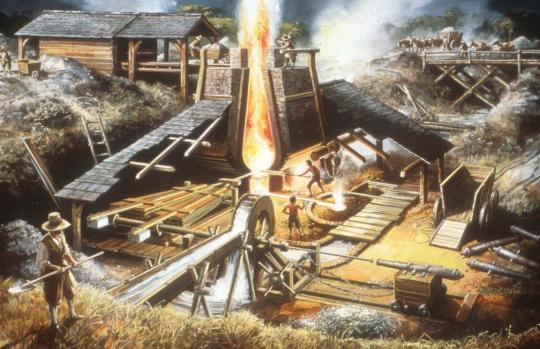
a blast furnace
So in all of this, what’s cold iron? Well, it’s iron that went though the heat and cooled off. (No heat = no iron, all you got is ore.) If it came out of a bloomery, or if it wasn’t cast, it’s by definition worked, hammered, beaten, wrought, and that happened while it was still hot.
Is there such a thing as “cold-wrought” iron? No. In fact, “working cold iron” was a simile for something foolish or pointless. A smith who beats cold iron instead of putting it in the fire shows folly, says a 1694 book on religion, so you too should choose your best tools, piety and good decorum, to educate your children and servants, instead of beating them. When Don Quixote (1605) declares he’ll go knight-erranting again, Sancho Panza tries to dissuade him, but it’s like “preaching in the desert and hammering on cold iron” (a direct translation of martillar en hierro frío).
Minor work can be done on cold iron. A 1710 dictionary of technical terms tells us that a rivetting-hammer is “chiefly used for rivetting or setting straight cold iron, or for crooking of small work; but ’tis seldom used at the forge”. Fully fashioning an object out of cold iron is not a real process – though a 1659 History of the World would claim that in Arabia it’s so hot that “smiths work nails and horseshoes out of cold iron, softened only by the vigorous heat of the sun, and the hard hammering of hands on the anvil”. [I declare myself unqualified to judge the veracity of this statement, let's just say I have doubts.] And there is of course such a thing as “cold wrought-iron”, as in wrought iron after it’s cooled off.
Either way, in the context of pre-20th century English texts which refer to apotropaic “cold iron”, it’s definitely not “cold-wrought”, or meteoritic, or a special alloy of any kind. It’s just iron.
Fiction
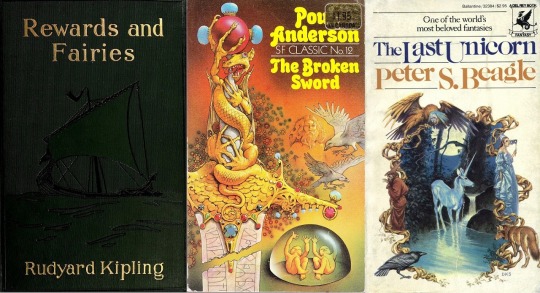
The old superstition kept coming up in fantasy fiction. In 1910 Rudyard Kipling wrote the very influential short story “Cold Iron” (in the collection Rewards and Fairies), where he explains invents the details of the fairies’ aversion to iron. They can’t bewitch a child wearing boots, because the boots have nails in the soles. They can’t pass under a doorway guarded by a horseshoe, but they can slip through the backdoor that people neglected to guard. Mortals live “on the near side of Cold Iron”, because there’s iron in every house, while fairies live “on the far side of Cold Iron”, and want nothing to do with it. And changelings brought up by fairies will go back to the world of mortals as soon they touch cold iron for the first time.
In Poul Anderson’s The Broken Sword (1954), we read:
“Let me tell you, boy, that you humans, weak and short-lived and unwitting, are nonetheless more strong than elves and trolls, aye, than giants and gods. And that you can touch cold iron is only one reason.”
In Peter S. Beagle’s The Last Unicorn (1968) the unicorn is imprisoned in an iron cage:
“She turned and turned in her prison, her body shrinking from the touch of the iron bars all around her. No creature of man’s night loves cold iron, and while the unicorn could endure its presence, the murderous smell of it seemed to turn her bones to sand and her blood to rain.”
Poul Anderson would come back to that idea in Operation Chaos (1971), where the worldbuilding’s premise is that magic and magical creatures have been reintroduced into the modern world, because a scientist “discovered he could degauss the effects of cold iron and release the goetic forces”. And that until then, they had been steadily declining, ever since the Iron Age came along.
There are a million examples, I’m just focusing on those that would have had a more direct influence on roleplaying games. However, I should note that all these say “cold iron” but mean “iron”. Yes, the fey call it cold, but they are a poetic bunch. You can’t expect Robin Goodfellow’s words to be pedestrian, now can you?
RPGs

And from there, fantasy roleplaying systems got the idea that Cold Iron is a special material that fey are vulnerable to. The term had been floating around since the early D&D days, but inconsistently, scattered in random sourcebooks, and not necessarily meaning anything else than iron. In 1st Edition’s Monster Manual (1977) it’s ghasts and quasits who are vulnerable to it, not any fey creature. Devils and/or fiends might dislike iron, powdered cold iron is a component in Magic Circle Against Evil, and “cold-wrought iron” makes a couple of appearances. For example, in AD&D it can strike Fool’s Gold and turn it back to its natural state, revealing the illusion.
Then Changeling: The Dreaming came along and made it a big deal, a fundamental rule, and an anathema to all fae:
Cold iron is the ultimate sign of Banality to changelings. ... Its presence makes changelings ill at ease, and cold iron weapons cause horrible, smoking wounds that rob changelings of Glamour and threaten their very existence.... The best way to think about cold iron is not as a thing, but as a process, a very low-tech process. It must be produced from iron ore over a charcoal fire. The resulting lump of black-gray material can then be forged (hammered) into useful shapes.
— Changeling: The Dreaming (2nd Edition, 1997)
So now that we know how iron works, does that description make sense? Well, if we assume that the iron ore is unceremoniously dumped on coals, it does not. You can’t smelt iron like that. If we assume that a bloomery is involved even though it’s not mentioned, then yes, this is broadly speaking how iron’s been made since the Iron Age, and until blast furnaces came into the picture. But the World of Darkness isn’t a pseudo-medieval setting, it’s modern urban fantasy. So the implication here is that “cold iron” is iron made the old way: you can’t buy it in the store, someone has to replicate ye olde process and do the whole thing by hand. Now, this is NOT how the term “cold iron” has been used in real life or fiction thus far, but hey, fantasy games are allowed to invent things.
Regardless, 3.5 borrowed the idea, and for the first time D&D made this a core rule. Now most fey creatures had damage reduction and took less damage from weapons and natural attacks, unless the weapon was made of Cold Iron:
“This iron, mined deep underground, known for its effectiveness against fey creatures, is forged at a lower temperature to preserve its delicate properties.”
— Player’s Handbook (3.5 Edition, 2003)
Pathfinder kept the rule, though 5e did not. And unlike Changeling, this definition left it somewhat ambiguous if we’re talking about a material with special composition (i.e. not iron) or made with a special process (i.e. iron but). The community was divided, threads were locked over this!
So until someone points me to new evidence, I’ll assume that the invention of cold iron as a special material, distinct from plain iron, should be attributed to TTRPGs.
#long post#cold iron#d&d#Changeling: The Dreaming#World of Darkness#Peter S. Beagle#The Last Unicorn#Rudyard Kipling#Poul Anderson#The Broken Sword#how to rogue#pathfinder#rogues in fiction#Operation Chaos#rogue superstitions#words of the trade#thieves' cant#ad&d#d&d history#1st edition#fey#3.5#fluff#trs
374 notes
·
View notes
Text
my least favourite thing from the watcher discourse has been people saying “WE never asked for higher quality” or “your most popular shows are where you just sit around and talk!!” - babes its likely not what THEY want to do for the rest of eternity lol. they’re allowed to want to grow as creatives and make things they are proud of?
#like i absolutely didn’t agree with their move to a paid model platform but this response isn’t the criticism u think it is#that and also the continious shit i saw about steven owning a tesla#like babes its HIS money? he’s allowed nice things and upgrades in his life lol?#AND the stuff about them making 100k from patreon with eat the rich comments#100k per month likely doesn’t cover all operating costs like you guys r thinking it does#they likely didn’t want to keep doing ad reads that interrupted their content structure and how they THEMSELVES percieved its value#as a former business major tho i def think even a little bit of market research could have stopped this lol#respectfully no one wants to pay for another thing#and the communication on it was unfortunately shit#but its not that big of a mistake that we tear em down like this#watcher#ryan bergara#shane madej#steven lim
64 notes
·
View notes
Text
More notes for Roach conlanging. Roach has grammatical gender, in which only Male, Female, and Object are grammatical genders, whereas Worker uses feminine grammar, Queen and King use a slight variant on feminine grammar, and Drone, and Queen-Alate use masculine grammar. This is because King is derived from Queen, due to their similar positions in a colony, and Queen-Alate is derived from Drone, as both are forms of alate.
Queen is an alteration of feminine grammar that functionally just adds a handful of extra syllables to it, and King is an offsprout of Queen that uses the same grammar with different pronouns. Queen-Alate, despite the name, is derived from Drone, as they are both for referring to different types of alate ant.
Most Roach dialects are intelligible to speakers of Snakemouth Den Cordyceps Roach, but Snakemouth Den Cordyceps Roach is not entirely intelligable to speakers of Roach dialects due to a mix of the excessively specialized vocabulary caused by the specific needs of its speakers, the fact that its speakers do not necessarily have Roach mouthparts and thus may not pronounce syllables in a similar way, and due to the fact that Inanimate Object is a full grammatical gender that does not exist in any other dialect of roach and replaces a decent chunk of terminology for things that previously had Other Words For Them.
#we speak#conlang#bug fables#please excuse us if we're mangling the terminology here btw. we cannot for the life of us remember the proper terms for half of this#and every time we try to google things it winds up turning up nothing#probably because we're googling shit like “the term for the thing where self reference is different if youre a guy or a girl”#and like. “part of speech that you use to refer to other people that isnt pronouns or a name that has title associations”#if we reread some textbooks we will probably remember but unfortunately these are not our textbook reference posts#they are our “what if we told you about the cool ways that we did grammar in here” post#god we love grammatical grammar (<guy who doesn't have a strong enough sense of gender to remember der and die properly)#(because we are the specific type of speaker where we're half operating based on what Feels Right with the word and we are)#(so fucking bad at remembering how gendering words is meant to go)#(the secret reason we hate phonetics is because we have to contend with both figuring out how mouthparts would work and like)#(Working Out A Reasonable Collection Of Sounds To Have In Our Language. which means we have to actually like. name things)#(cruel and unusual that we have to make actual words rather than loosely tossing building blocks on the floor. honestly.)#anyways snakemouth den roach is one of those dialects where it's on the verge of becoming a language on its own#where it's very debatable on if it's Actually A New Language or just a very specific dialect of an old one because. well. boxes#picture it as like. trying to speak to someone who you Think is speaking french but they have an extremely thick regional accent#and they keep using like ten-syllable words that you probably don't know but that seem to refer to things that could be referred to#way more concisely?#and also rather than just le and la they have added an entire new lu to the mix and you are unclear if its the accent or a new word entirel#(note: we are not a specialist on french as we primarily know it in the “we've been around it long enough to vaguely know what's being said#way and are not currently caught up enough on whatever they have going on to know about any major grammar stuff going on over there)#(but we are terrible enough with remembering the grammar of the german that we do speak that we do not trust ourself to not be Worse there)
30 notes
·
View notes
Text




OPERATION MINCEMEAT | ORIGINAL CAST RECORDING » [1/4]
#operation mincemeat#.gif#omcr*#natasha hodgson#david cumming#claire marie hall#zoe roberts#musicaltheatreedit#musicaledit#📹: lasagna#i hope everyone appreciates the detail i added in here
52 notes
·
View notes
Note
Ingo, who is explicitly banned from bringing home more steel types and upsetting the team balance further: "They're not mine"
Emmet, watching Chandelure and Aegislash dance around the living room gleefully, Chargabug tucked in the shield: "Somehow, someway, this is still your fault."
(Maybe sometimes they pose as decor in the hotel?And float ominously off the wall behind Nancy if someone starts making a fuss)

Charjabug often overestimates his own resilience.
#i never really considered adding more mons to operators team but i could see aegislash#simply because they could throw charjabug like a frisbee#smooth operator#smooth operator askbox#thanks for the ask!
38 notes
·
View notes
Text
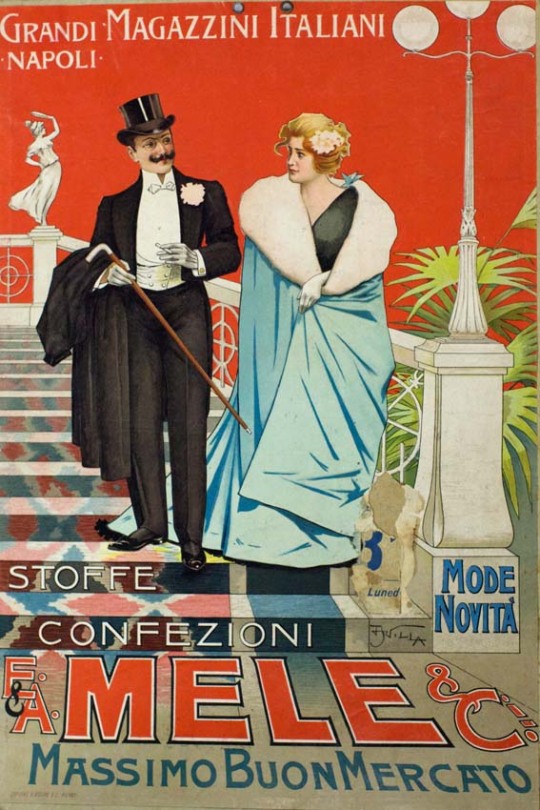




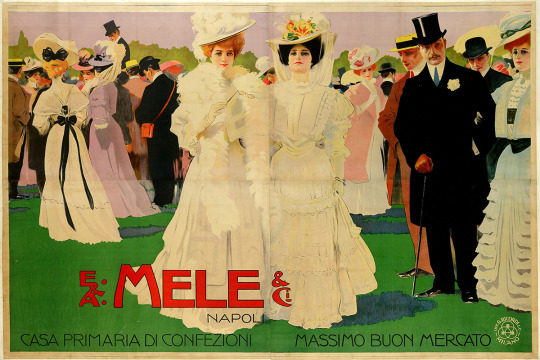
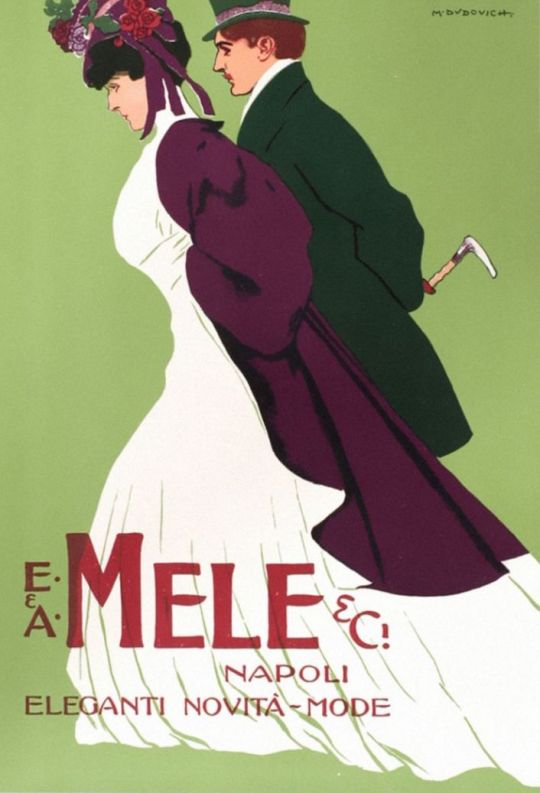
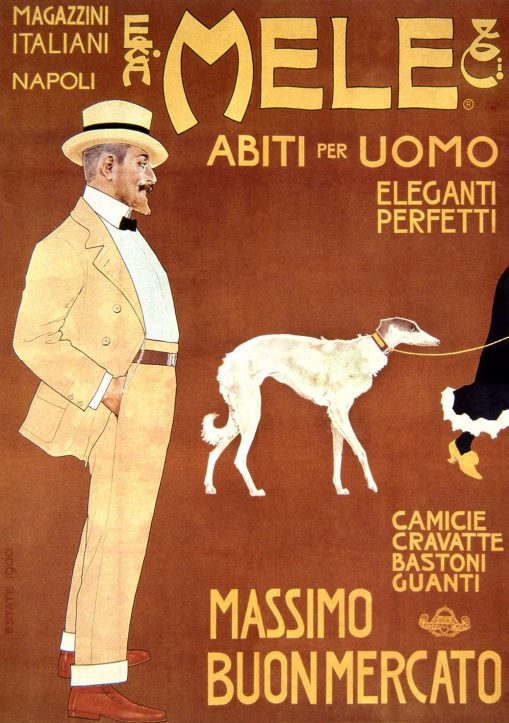


Fashion ads compilation from the Mele Brothers department stores (1890s - 1900s)
#fashionposting#I wanted to share some fashion stuff today because this style is a big inspo for me#the colours and contrasts here are gorgeous#the stores were operating from 1889 to 1932 and a lot of ads are uploaded online#the main artists were:#Marcello Dudovich#Achille Beltrame#Leopoldo Metlicovitz#Gian Emilio Malerba#fashion advertisement#historical fashion#1890s#1900s#early 1900s#1900s fashion#fashion illustration#vintage ads#vintage advertising#fashion ads#italian fashion#my posts#fashion
73 notes
·
View notes
Text
An alternative reason for why MePhone can't bring bow back
i always found his reason of "she died while i was dead so i didn't get the notification to revive her" to be a bit odd?? idk maybe theres a reason we dont know about, but at the moment it never really made sense to me, so i made a headcanoned alternative reason
in season 1 when bow died and so did MePhone, MePhone4S gave his body so MePhone could come back, but 4S didnt have the MeLife profiles already like MePhone's original body had, so not only did he lose bow's MeLife profile, he lost all the living contestant's profiles
but he could still re do theirs unlike bow's, it was too late for him to add bow's to his new body (also we know he cant make a profile for someone whos already dead cause in the last episode of S3 he had to add Springy's quickly and in a rush before it was too late)
#that also means he probably spent months getting back the profiles of the living contestants along with the new S2 contestants#cause he said in the last episode of S3 that he had to do several days of work in a few seconds do add Springy to MeLife#im also not sure what the bounds of his originally reasoning would be??#theres been times characters died while he was non operational (ex. S2 E8 and S2 E13) but he could still bring them back#inanimate insanity#ii#mephone4#it would also mean he added Taco back even after what happened and after she left....
17 notes
·
View notes
Text
when other people seem to get sick of you starting from a young age, it does become harder and harder to reach out to your friends first because of the fear that you will also make that person sick of you, because you have multiple concrete experiences of people who got sick of you. but at the same time when you don't reach out you will make these people you care about think that you don't care about them. the fear of abandonment can then consequently lead to abandonment. fucked up!
#i am still working on this and i struggle v much with it#most often i will be formulating some kind of reason to message a friend - only to see they already messaged me#bc we're friends and we can just chat whenever abt anything#but i'm still operating like i'm running a targeted ad campaign#idk how long it will take me to unlearn this despite the fact i KNOW it's insane behavior
18 notes
·
View notes
Text
Presenting two more characters and their redesigns in my HTTYD/The Deep story! One is more involved in the story, but the other makes PLOT, and neither really ever interact or connect to one another plot wise to my immediate knowledge in the overall story.
Introducing Savage and Eret!

Savage is not an Outcast and Alvins right hand man, but a true Berserker warrior, serving Oswald and his family for years. But when Oswald the Antagonistic becomes Oswald the Agreeable, Savage starts to grow restless. The Berserkers aren’t at war with the Berkians and surrounding tribes anymore, Oswald trying to maintain a semblance of peace in the dragon-war ridden Archipelago. Savage is a follower, not a natural born leader, but years of peace treaty after peace treaty, and babysitting Oswalds whelps has made him seek out other like-minded Berserkers, planning an uprising against the passive Chieftain. Oswald seemed to have caught on to what Savage was doing, escaping their attempted assassination, and now Savage is trying to commandeer the Berserker Tribe as a whole through sewing doubt amongst the tribe against Oswalds children, and trying to pit the siblings against one another in hopes they’ll simply get rid of the other for him. Savage isn’t good at thinking things through though, especially what the aftermath of his plans to stage a coup or civil war amongst the tribe to try and take leadership might be.
Eret son of Eret is a budding Dragon Trapper, partaking in his father’s business of trapping dragons and bringing them to Auction Markets run by the Grimborn brothers. Dragon Trapping was introduced to Erets family through his paternal Grandfather, with loans being taken from the wrong people, with no money to pay them back leading his Grandfather to Dragon Trapping. With similar habits being passed on to his son, Eret Sr, Eret has been taken on as crew for his fathers quest to pay off the debts his grandfather failed to pay, and his fathers own drunken mistakes. Eret isn’t sure how to feel about it all, his father pushing the looming mantle of Captain on to Eret as his eventual future, leaving whatever debts his father fails to pay before retirement for Eret to try and absolve, with old bedtime stories from his deceased mother and her side of the family speaking of dragons being more than wild animals. Eret’s been grappling with his internal struggles for a few years now, and a sudden interaction with some Archipelagon teenagers apparently riding dragons only rattles his inner beliefs even more.
I decided to go a bit of a different route with Savage in this story, making him a member of the Berserker tribe instead of the Outcasts. There are a lot of elements of his prior design still in this one, but he’s got a lead part in a lot of the early Berserker central arks and plots, especially in Heathers early story, and why she makes some of the decisions she does in Riders and Defenders of Berk, which has a sort of butterfly effect on the way she is in RTTE. He’s not a MAIN villain like the Grimborn brothers, Alvin, Heather, Drago, and a certain someone from the games, more of a small villain and a reoccurring nuisance. He gets his comeuppance however, as he’s not good at thinking things through, especially in the long run, and eventually gets revealed for all his nefarious schemes, and promptly exiled
Eret is a little different to the swashbuckling Dragon Trapper that’s in HTTYD 2, but he’s also nearly five years younger, a little older than Dagur and around the age that the riders were in RTTE. So, eighteen-nineteen-nearly twenty. He’s not Captain of the ship yet, and dealing with a lot of inner family struggles and trying to come to terms with what his future may hold. Generational and pawned off debt is how I play off (Headcanon wise) how he came to be under Drago’s employment in the films, and I’m playing with the setting of the early stages of how that happened here. With his grandfather and father both taking loans they couldn’t keep or pay back, and turning to Dragon Trapping to try and pay them off. Afterall, dragon parts and living dragons sell for a LOT of money. The Dragon Riders throw a bit of a wrench in things though, and Eret ends up being one of their first allies beyond Dagur and someone else in the Archipelago. He’s also a little shorter and not nearly as beefy as he is five years from then, not having the experience to build up that kind of muscle yet. I did this partly because of his age, and partly because Nico Marlets early concept art for him (whose HTTYD art I love and want tattooed to my brain) had him being a little more scrawny, and so I thought that was a nice callback
More characters to come…eventually, as it takes time to draw these, especially with the designing process I go through
#Savage isn’t the only character whose origins and general story I change#i mean i already changed Heathers a little bit#but i can think of one other character who’s a bit different than they are in the show in regards to setting#and another who is an antagonist when they weren’t in the films#i gave Eret the little beads he had in his concept art I love them so much#his mothers side of his family is going to be so much fun to dive into#they’re part of a whole arc in RTTE and Eret reuniting with that side of his family is going to be so much fun to write#the deep 2015#the deep cartoon#httyd#httyd/the deep crossover#Httyd savage#eret son of eret#there’s a few other characters im doing redesigns of appearance and plot for#aside from the characters of the deep who I have to sew into this world somehow#I’ve got Mala/Johann/eventually Drago and Valka planned#also chicken#can’t think of anyone else who would necessarily need redesigning/replotting#maybe Viggo and Ryker as they’re both five years younger#but their goals are relatively the same as they are in the show#with added plot on Viggos end and furhter exploration to their dynamic and operations#its gonna be so much fun tying everythign all together
17 notes
·
View notes